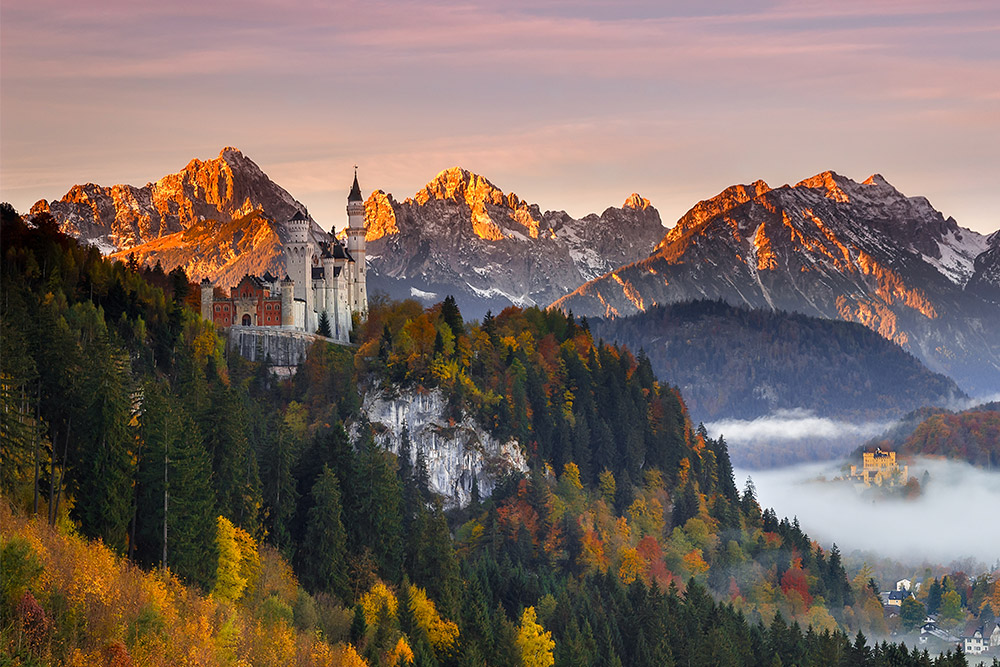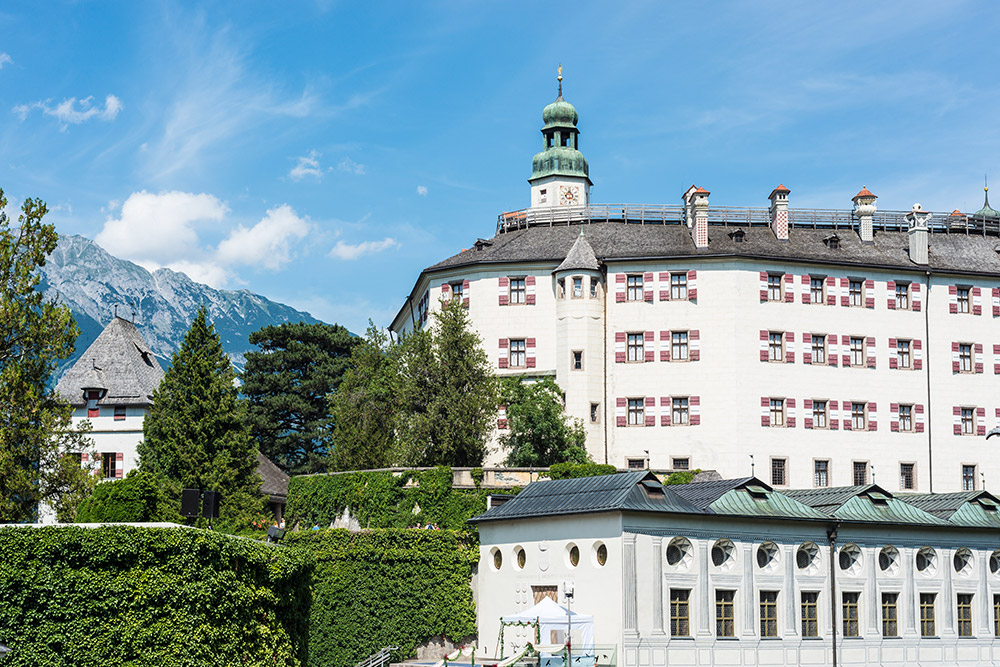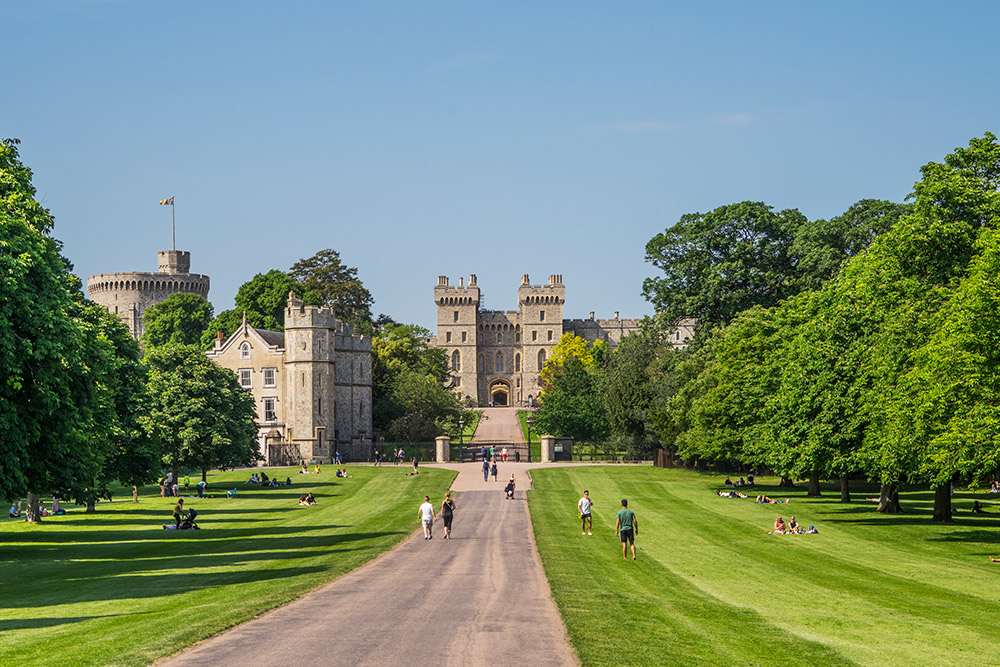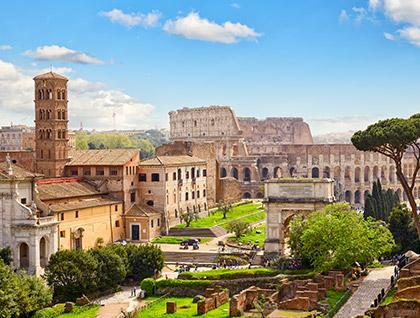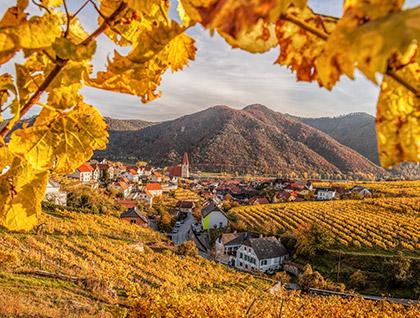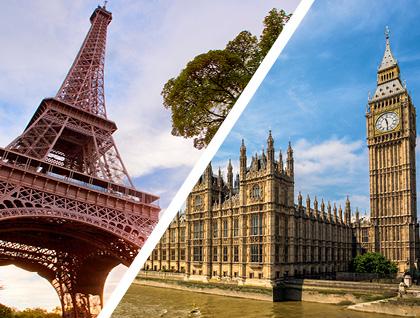Our Favorite Captivating European Castles
LT Globetrotter
Europe's castles, with their towering ramparts and centuries-old stone walls, are more than just magnificent structures; they are living testaments to the rich tapestry of history and the enduring artistry of human craftsmanship. As you embark on a journey to explore these iconic fortresses, you will immerse yourself in a world where knights once roamed, kings and queens held court, and legends were born. The castles in Europe are towering guardians of a bygone era, whispering tales of conquest, intrigue, and romance.
These architectural marvels, scattered across the European continent, offer a glimpse into the past. From the fairy-tale splendor of Germany's Neuschwanstein Castle to the grandeur of France's Château de Chambord, each castle carries a unique story waiting to be unraveled. But it's not just their historical significance that beckons travelers; it's also their remarkable beauty. With their intricate facades, imposing turrets, and lush surroundings, European castles are not just structures; they are art in stone.
Join us on a captivating journey through Europe's finest castles, where history comes alive, and architectural wonders are eternal symbols of the past's grandeur.
Contents
Neuschwanstein Castle
Perched majestically amidst the stunning backdrop of the Bavarian Alps, Neuschwanstein Castle emerges like a vision from a fairy tale. This enchanting masterpiece of architectural opulence has captured the imagination of millions worldwide. With its soaring spires, whimsical towers, and intricate facades, Neuschwanstein embodies the essence of a fairy-tale castle, as if plucked from the pages of a storybook. It’s definitely a must-see when discovering the marvels of Germany.
Here are some reasons why you should visit:
- Architectural opulence: Neuschwanstein Castle is a stunning example of 19th-century Romanticism. The castle has elaborate paintings, sculptures, and stained glass windows. It is a feast for the senses, and it is easy to see why it has captured the imagination of millions.
- Inspiration for Disney’s iconic castle: Neuschwanstein Castle is said to have inspired the castle in Disney's Sleeping Beauty. It has also been featured in many other films and television shows. The castle's fairytale appearance makes it a popular destination for tourists from all over the world.
- Symbol of German Romanticism: The castle was built in the 19th century, during a period of renewed interest in medieval culture and history. Ludwig II, the king who commissioned the castle, was a passionate admirer of the Middle Ages and wanted to create a castle that would be a "fairytale castle". The castle's architecture and decoration reflect this romantic ideal, and it has become a popular symbol of German Romanticism.
- Home of King Ludwig II: Neuschwanstein Castle is a reminder of King Ludwig II, who was a controversial figure in German history. Ludwig II was a reclusive and eccentric monarch who spent lavishly on his castles. He was eventually declared insane and died under mysterious circumstances. However, his castles have remained popular tourist destinations, and they continue to fascinate people today.
Read More: How to Tour Europe on a Budget in 2024
Edinburgh Castle
Edinburgh Castle is one of the most popular tourist attractions in Scotland. It is located on Castle Rock, an extinct volcano in the heart of Edinburgh city center. The castle has a long and fascinating history, dating back to the 12th century. It has been used as a royal residence, a military stronghold, and a prison. Today, it is home to the Scottish Crown Jewels, the Stone of Destiny, and the National War Museum of Scotland.
Here are some reasons why you should visit:
- Its prominent position: Edinburgh Castle is perched on top of Castle Rock, which offers stunning city views. You can see the Firth of Forth, the Scottish Parliament Building, and the Old Town from the castle walls.
- Role in Scottish history: Edinburgh Castle has played a key role in Scottish history. It was the site of many important events, including the coronations of Scottish kings and queens. The castle also housed the Stone of Destiny, which is said to have been used to crown Scottish kings since the 9th century.
- The Stone of Destiny and the Honours of Scotland: The Stone of Destiny is a large block of sandstone that is said to have magical powers. It was taken to England in 1296 by Edward I of England, but it was returned to Scotland in 1996. The Honours of Scotland are the Scottish Crown Jewels, which include the crown, sceptre, and sword of state. They are kept in the Crown Room of Edinburgh Castle.
- The Royal Edinburgh Military Tattoo: No, this isn’t about everlasting ink, a military tattoo is a music performance or ceremony display. This specific annual event is one of the most popular tourist attractions in Scotland. It features performances by military bands from all over the world, as well as traditional Scottish bagpipe demonstrations and Highland dancing.
Château de Chambord
The Château de Chambord is a magnificent castle that boasts of Renaissance architecture and is situated in the stunning Loire Valley in France. The castle's construction was commissioned by King Francis I in the early 16th century, a great admirer of Italian art and architecture. The castle's design is a fusion of traditional French medieval architecture and Italian Renaissance style, making it a masterpiece of architectural beauty. The Château de Chambord has been designated as a UNESCO World Heritage Site and is highly regarded as one of France's most beloved tourist destinations, attracting visitors from all over the world to marvel at its grandeur and beauty.
Here are some reasons why you should visit:
- Unique Renaissance architecture: The Château de Chambord is a masterpiece of Renaissance architecture. It features a blend of French and Italian styles, with Gothic and classical architecture elements. The castle is asymmetrical, with many towers and turrets.
- Ties to Leonardo da Vinci: It is believed that Leonardo da Vinci may have been involved in the design of the Château de Chambord. There is some evidence to support this claim, such as the similarity between the castle's double helix staircase and a design that da Vinci sketched in his notebooks.
- History as a hunting lodge: The Château de Chambord was originally built as a hunting lodge for King Francis I. The castle is located in the heart of the Loire Valley, which was a popular hunting ground for French royalty. The castle has a large park with many forests and lakes, which would have provided excellent hunting opportunities for the king and his guests.
- Famous double helix staircase: The Château de Chambord is home to the famous double helix staircase. This staircase comprises two spiral staircases that wind around each other. The staircase is a marvel of engineering, and it is one of the most distinctive features of the castle.
- Luxurious and opulent atmosphere: The substantial collection of paintings, tapestries, furniture, and art objects. The collection includes works by some of the greatest artists of the Renaissance, such as Leonardo da Vinci, Andrea del Sarto, and Benvenuto Cellini. The artworks and furnishings of the Château de Chambord are a testament to the wealth and power of the French monarchy in the Renaissance period.
Read More: Your Seasonal Guide to Paris
Prague Castle
Prague Castle, a renowned tourist destination situated in the beautiful Czech Republic, is truly a sight to behold. This grand palace complex has been the home of Czech monarchs and presidents for countless years and boasts an elaborate and vast design. Its location on a hilltop provides an awe-inspiring panoramic view of the picturesque city of Prague, making it an absolute must-visit for anyone traveling to the region.
Here are some reasons why you should visit:
- Status as one of the largest castles in the world: Prague Castle is one of the largest castles in the world, with an area of over 70,000 square meters. It is a UNESCO World Heritage Site and is considered one of the most important historical monuments in the Czech Republic.
- Historical importance to Czech monarchs and presidents: Prague Castle has been the seat of Czech monarchs for centuries. It was also the seat of the President of Czechoslovakia from 1918 to 1992. The castle is a symbol of Czech national identity and history.
- St. Vitus Cathedral: One of the most iconic landmarks within Prague Castle is undoubtedly the St. Vitus Cathedral. This awe-inspiring Gothic structure dates back to the 14th century and has become a must-see destination for tourists from all over the world. The cathedral's historical significance is further amplified by the presence of the tombs of numerous Czech monarchs, which only adds to its allure.
- Changing of the guard: The highly sought-after ceremony of changing the guard at Prague Castle is a captivating hourly event that never fails to amaze tourists. This mesmerizing display showcases a marching band and guardsmen adorned in their traditional uniforms, adding to the grandeur of the occasion.
Bran Castle
Bran Castle is a popular tourist destination in Romania, often referred to as "Dracula's Castle" due to its association with the fictional vampire Count Dracula. However, the castle has a rich history that predates the legend of Dracula by centuries. Bran Castle was built in the 14th century as a fortress to protect the Bran Pass, a strategic location on the border between Transylvania and Wallachia. The castle was originally owned by the Teutonic Knights, but it was later acquired by the Romanian royal family.
Here are some reasons why you should visit:
- A long and rich history: Bran Castle was built as a fortress to protect the Bran Pass, a strategic location on the border between Transylvania and Wallachia. The castle has been used for a variety of purposes over the centuries, including as a royal residence, a prison, and a museum.
- Legends and vampires: While Bran Castle is often associated with Dracula, there is no historical evidence to support the claim that the castle was ever owned by Vlad the Impaler, the inspiration for the fictional vampire and real-life 15th-century Romanian prince who was known for his cruelty.
- Its position in the Transylvanian landscape: Bran Castle is located in the Transylvanian Alps, a scenic region of Romania. The castle is surrounded by forests and mountains, and it offers stunning views of the surrounding countryside.
- Queen Marie of Romania's connection to the castle: During the year 1920, Brașov city handed over Bran Castle to Queen Marie of Greater Romania. She took on the responsibility of restoring the castle to its former glory and transformed it into a luxurious summer home. The queen resided in the castle before and after her husband, King Ferdinand I, passed away in 1927. Many enhancements were made to the castle during her stay, such as the addition of a new wing and a stunning garden.
Alcazar of Segovia
The Alcazar of Segovia is a magnificent castle located in the city of Segovia, Spain. It is a UNESCO World Heritage Site and one of the most popular tourist attractions in Spain. The castle is known for its unique blend of architectural styles, including Moorish and Gothic. It was originally built as a fortress in the 12th century. It was later used as a royal palace by the Castilian monarchs. The castle has been rebuilt and expanded several times over the centuries, and it reflects the changing architectural styles of each period. The Alcazar is a stunning example of medieval architecture. It is a massive structure with towers, turrets, and battlements. The castle is also known for its beautiful gardens and courtyards.
Here are some reasons why you should visit:
- Unique blend of architectural styles: The Alcazar of Segovia is a unique blend of architectural styles, including Moorish, Gothic, and Renaissance. The Moorish influence is evident in the horseshoe arches and ribbed vaults. The Gothic influence is evident in the pointed arches and flying buttresses. The Renaissance influence is evident in the use of classical columns and pediments.
- Strategic location: The Alcazar of Segovia is located on a hilltop overlooking the city of Segovia. This strategic location made the castle an important military stronghold for centuries. The castle was also used as a prison during the Spanish Civil War.
- Role as a royal palace: The Alcazar of Segovia was used as a royal palace by the Castilian monarchs for centuries. The castle was the birthplace of several Spanish kings, including King Alfonso X the Wise and King Henry IV. The castle was also used as a summer residence by the Spanish royal family.
- Famous Segovia Aqueduct nearby: The Alcazar of Segovia is located near the famous Segovia Aqueduct. The aqueduct is a Roman structure that was built in the 1st century AD. The aqueduct is 160 meters long and 28 meters high. It is one of the best-preserved Roman aqueducts in the world.
Read More: The Best Hidden Gems in Europe
Schloss Ambras Castle
Schloss Ambras Castle is a stunning piece of Renaissance architecture that can be found in the charming city of Innsbruck, Austria. This magnificent castle was erected in the 16th century by none other than Archduke Ferdinand II of Tyrol, who spared no expense in its construction. Today, Schloss Ambras Castle is home to a vast collection of priceless artworks and artifacts, which are widely considered to be among the most significant and impressive in all of Europe. Visitors to this remarkable castle can expect to be dazzled by the sheer beauty and grandeur of its many treasures, which represent some of the finest examples of art and craftsmanship from across the globe.
Here are some reasons why you should visit:
- World-renowned art collection: The castle houses a collection of paintings, sculptures, tapestries, and other artworks that span from the Middle Ages to the 18th century. Some of the highlights include the Hall of Portraits, which features portraits of European royalty and nobility; the Chamber of Art and Curiosities, which is filled with strange and wonderful objects; and the Armory, which houses a collection of medieval and Renaissance armor.
- The castle is beautifully preserved: Schloss Ambras Castle is in excellent condition, and it has been carefully restored to its former glory. The castle's interior is decorated with frescoes, tapestries, and other period furnishings, which create a truly immersive experience.
- Stunning views of Innsbruck: The castle is located on a hilltop overlooking Innsbruck, and it offers stunning views of the city and the surrounding mountains. On a clear day, you can even see the Alps in the distance.
- Learn about Austrian history: The castle is home to a museum that tells the story of the Habsburg dynasty, which ruled Austria for centuries. The museum also has exhibits on the history of Tyrol, the region where the castle is located.
Windsor Castle
Windsor Castle is a magnificent castle located in the town of Windsor, England. It is the oldest and largest inhabited castle in the world, and it has been a royal residence for over 900 years. The castle is a popular tourist destination, and it is also used for state occasions and royal weddings. The castle is a popular tourist destination, and it welcomes over 2 million visitors each year. Visitors can tour the State Apartments, the Royal Collection, and the castle grounds. You can also watch the Changing of the Guard ceremony, which takes place every morning in the castle's Lower Ward.
Here are some reasons why you should visit:
- The oldest and largest inhabited castle in the world: Windsor Castle was founded in the 11th century by William the Conqueror. It has been expanded and renovated over the centuries, but it remains one of the most impressive castles in the world. The castle is home to over 1,000 rooms, and it covers an area of over 48 acres.
- Royal weddings: Along with being a favorite weekend home monarchs like Queen Elizabeth II, Windsor has been the scene of many important events in British history, including the weddings of Prince Charles and Lady Diana Spencer in 1981 and Prince William and Kate Middleton in 2011.
- As seen in: The castle's iconic exterior and luxurious interiors have made it a popular choice for filmmakers. It was used in films such as The King’s Speech, The Lion in Winter, and The Other Boleyn Girl, as well as television shows like Downton Abbey and The Crown.
- Rooms upon rooms: The castle is home to over 1,000 rooms, including the State Apartments, which are used for state banquets and other formal events. The State Apartments are decorated with lavish tapestries, paintings, and furniture. The castle also houses the Royal Collection, one of the largest and most important art collections in the world.
- State Apartments and St. George's Chapel: The State Apartments are the public rooms of the castle. They are decorated with lavish tapestries, paintings, and furniture. The State Apartments are used for state banquets, receptions, and other formal events. St. George's Chapel is the chapel of the Order of the Garter, a chivalric order founded by Edward III in 1348. The chapel is also the burial place of many British monarchs, including Henry VIII and Charles I.
Read More: 8 Days in London and Paris
The Alhambra
The Alhambra, an awe-inspiring palace and fortress ensemble, is located in the culturally rich city of Granada, Spain. The Moors, who built this impressive structure in the 13th century, infused it with their unique architectural style, making it an unparalleled example of Moorish architecture worldwide. This magnificent edifice has been designated as a UNESCO World Heritage Site, a testament to its historical and cultural significance. As a consequence, the Alhambra is a highly sought-after destination for tourists visiting Spain, attracting visitors from all over the world.
Here are some reasons why you should visit:
- Breathtaking views: The Alhambra is located on a hilltop overlooking the city of Granada. From the Alhambra you can enjoy stunning views of the city, the Sierra Nevada mountains, and the Darro River. The views are especially beautiful at sunset when the city is bathed in golden light.
- Stunning Moorish architecture and intricate Islamic art: The Alhambra is renowned for its stunning Moorish architecture and intricate Islamic art. The complex is decorated with intricate carvings, mosaics, and fountains. The most famous example of Moorish architecture in the Alhambra is the Court of the Lions.
- Beautiful Generalife Gardens: These enchanting gardens, situated adjacent to the majestic Alhambra, boast an exquisite embodiment of Moorish garden architecture and serve as a highly sought-after destination for indulging in serene relaxation and picturesque appreciation.
- Historical role as a palace and fortress: The Alhambra was originally built as a palace for the Moorish rulers of Granada. It was also used as a fortress to defend the city from invaders. The Alhambra played an important role in the history of Spain, and it is a reminder of the Moorish influence on Spanish culture.
Europe is home to some of the most beautiful and iconic castles in the world. These castles are a testament to the rich history and culture of Europe, and they offer a unique glimpse into the past. Whether you are interested in history, architecture, and art, or simply want to experience something truly magical, plan a visit to one of these amazing castles.
Ready to immerse yourself in Europe’s dramatic and storied history? Choose your favorite castle (or pick a few!) and connect with our expert Travel Consultants to start planning.!

